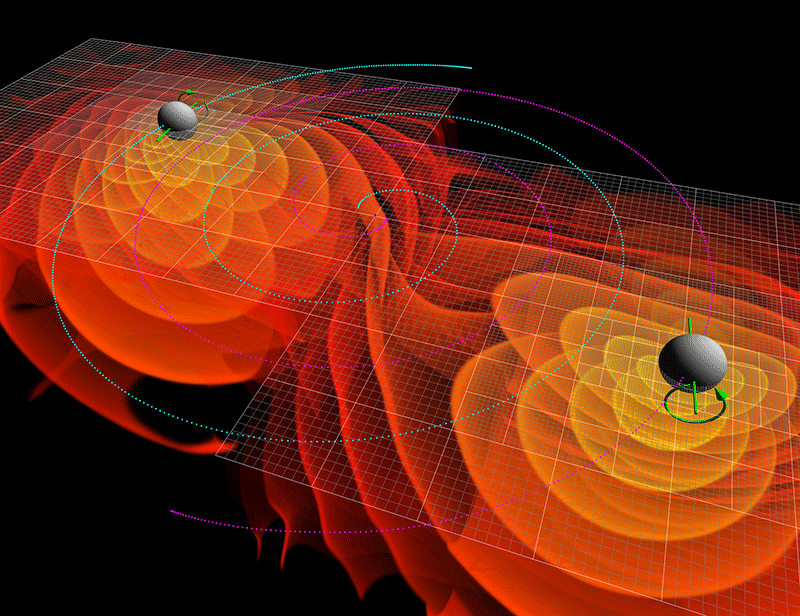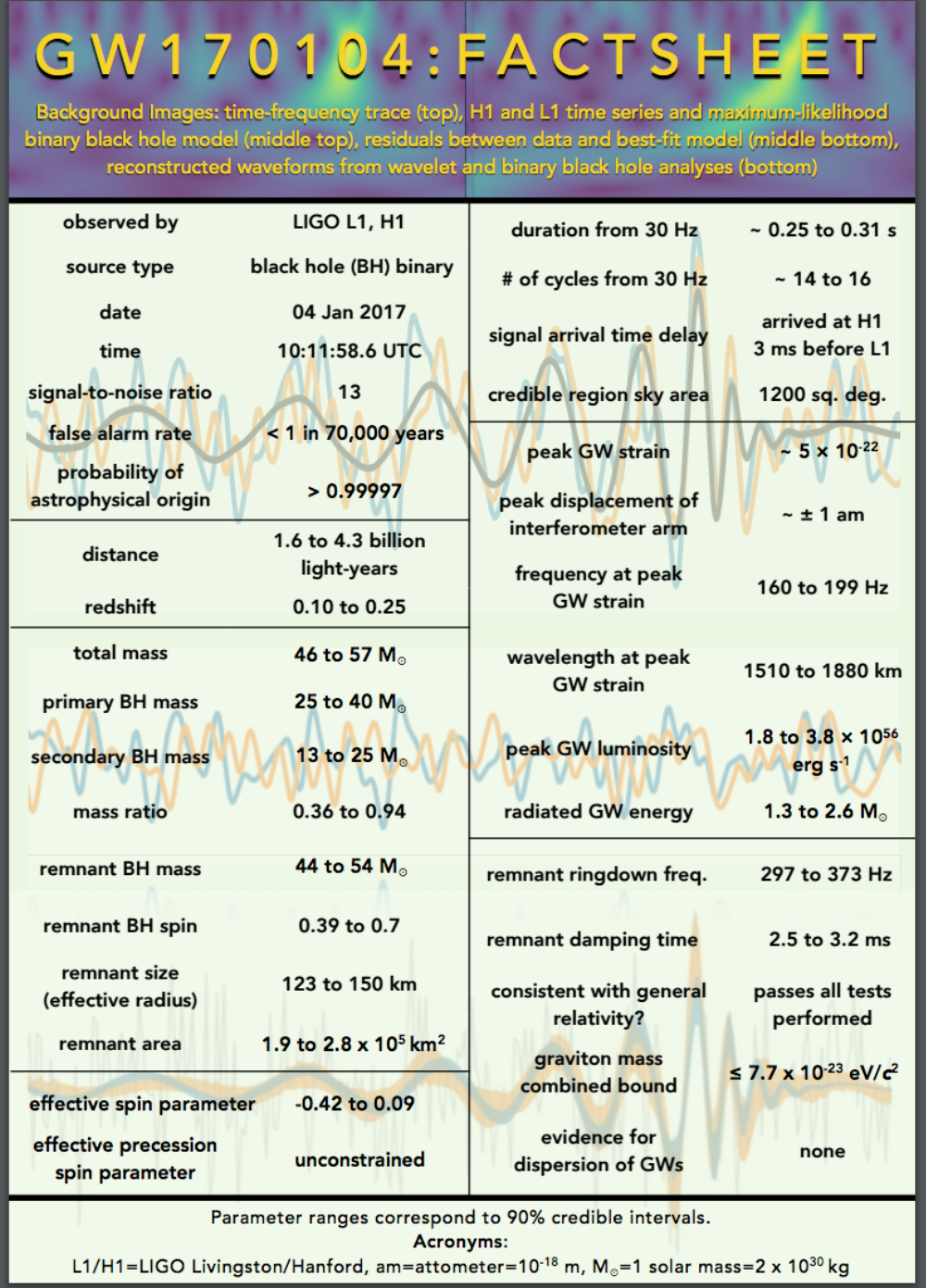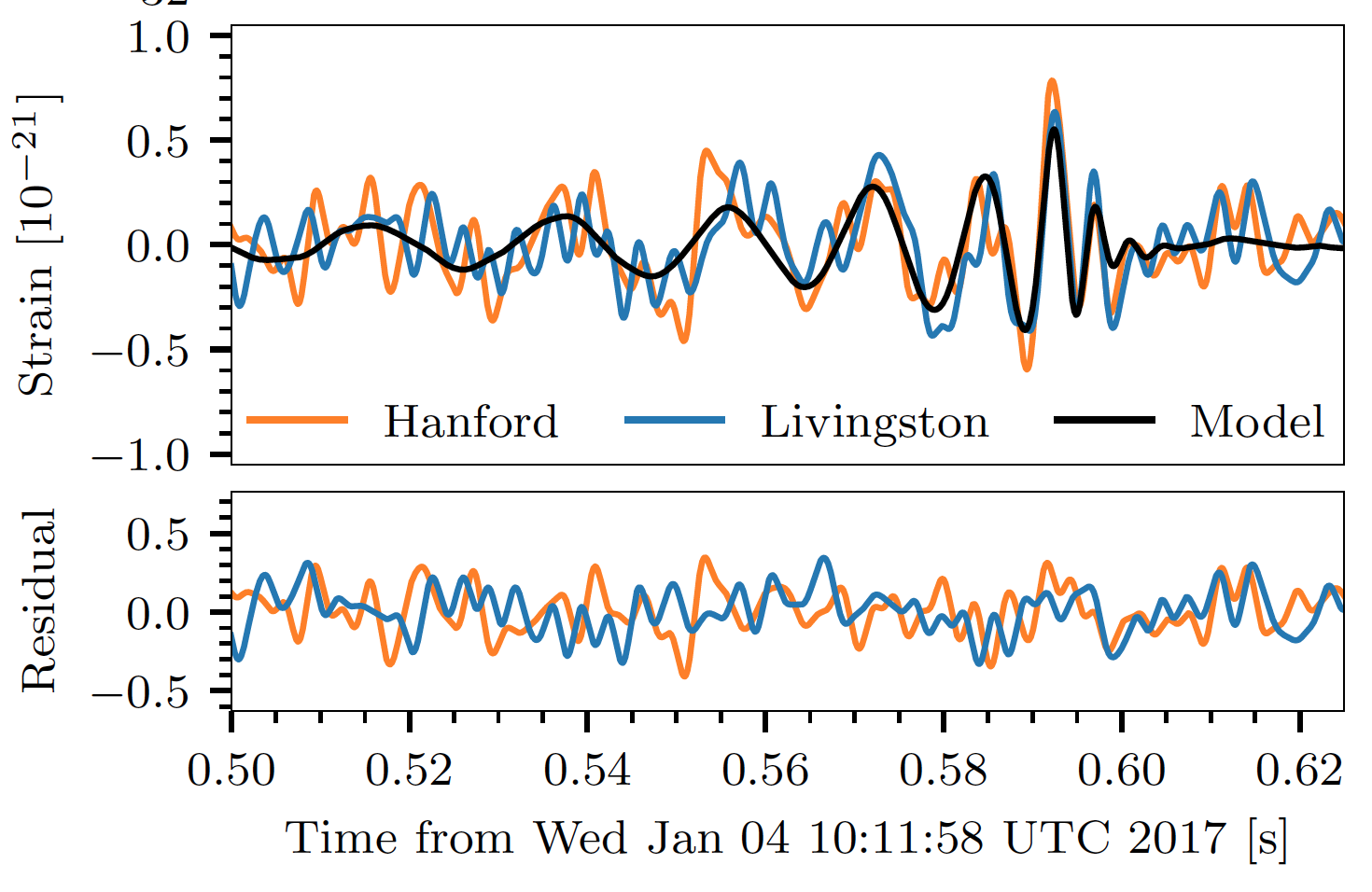Today, the international collaboration LIGO-Virgo announced the registration of gravitational waves for the third time in history. The source, as in the
previous two times , was a pair of black holes. The results of the study published an article in the
Physical Review Letters .

About signal GW170104
Since the time of the
first detection and the first scientific cycle, the sensitivity of the detectors has increased, and the technical noise has decreased, which made it possible to obtain data of higher quality.
During the second working cycle of the Advanced LIGO observatories, a signal was recorded that was very reliably caused by gravitational waves — erroneously, such a signal may appear every 70,000 years of constant observations (signal-to-noise ratio 13 and reliability greater than 5σ).
Black holes of about 20 and 30 solar masses merged into one large, emitting at the same time gravitational waves with a total energy of about two solar masses. The merging process itself took less than a second, and at the time of the merger, the BH accelerated to 60% of the speed of light!
The signal went to us about several billion years (the source is at a distance of about 1000 MPK), and was registered by two LIGO detectors in the USA on January 4, 2017

What knowledge do we gain about the universe?
In the previous article, I told you how we know that the signal is really gravitational-wave, and about plans for the development of gravitational-wave astronomy. This time we will talk about why we need these detectors at all, and what we can learn about the new universe.
Gravity speed
UPD: adjusted the speed rating and added a calculation method.
The most frequent question about gravitational waves is about the speed of their propagation. In the General Theory of Relativity (GTR), this velocity is equal to the speed of light. The LIGO experiment confirms this with great accuracy: a gravitational wave arrives at two LIGO detectors located in different parts of the United States at a distance of several thousand kilometers, with some delay, and knowing the distance between the detectors and this delay can be estimated at the propagation velocity. And up to the eleven decimal place this speed is equal to the speed of light.
How to get itWe look at the formula for connecting the velocity of the GW with its mass (p. 14). Given that the wave energy is given

get

Where

- graviton mass,

- Planck's constant, f - wave frequency.
Substituting the graviton mass from the article, the frequency of the order of 100 Hz (for example) and the constant, we get:

From here we see that the error in the difference between the velocities appears only after the eleventh decimal place.
GRT tests
In a more general sense, we
can check how our black hole models fit experimental data. So far everything is the same:

Although only a few parameters are enough to describe a pair of black holes, an analytical solution of the Einstein equations to merge them is almost impossible. Therefore, scientists use
numerical calculations to obtain real models. And where there are numerical calculations, there are all sorts of approximations, so the coincidence of the obtained model with the experiment is so important - this allows us to say how true our ideas about GR are.
Of course, it is possible to check for various modifications of GR. Some of them may already be excluded - for example, they require dispersion of GW or excess of the speed of light.
Others are waiting for an increase in the sensitivity of the detectors to check.
And still others, such as, for example, the
memory of space about waves , can be checked now.
In general, astrophysicists have a fascinating time!
The emergence of stars
From the parameters of black holes you can get a lot of
information about the cosmos and the formation of the universe. First, the observation of grav waves is the first evidence of the existence of paired black holes. Secondly, the masses of these black holes are unexpectedly large - no one expected that paired black holes of such a mass occur so often.
Interesting conclusions can be drawn about the age of BH systems. The earlier a star has formed from the beginning of the Universe, the less the substance of previous stars in it - the
lower the metal content. On the other hand, the BH mass depends on the amount of metals in it, so from the measured BH masses it can be said how young the stars from which they were formed were. From this follows a curious conclusion that twin BHs can form both in star clusters (if the environment is young enough) and in isolation, which was not previously known. Observing the BH parameters, one can say how these holes were formed - in isolation or not.
Further observation of BH parameters, such as the orbital momentum, can give even more insight into cosmological processes.
Over the past year, LIGO has registered three significant events, and with an increase in detector sensitivity in the next scientific cycle, the number of such events will increase, giving us more and more knowledge about the Universe.
Additional materials and links
1. What are gravitational waves?
2. On the
official website of LIGO there are a lot of interesting materials: both
video and little articles.
3. Join the popular search for gravitational waves through distributed computing at
Einstein @ Home .
4. And the collaboration has all sorts of media where interesting materials are constantly published:
Twitter ,
Facebook and
Youtube .